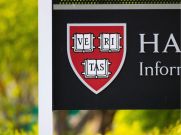States around the nation have started to consider establishing independent centers in their public universities, where genuine, politically pluralist scholarship and teaching can thrive. NAS and the Civics Alliance have drafted our own model bill to guide policymakers who wish to establish a School of Intellectual Freedom, and we are delighted to see that new centers have been proposed in states such as Tennessee, South Dakota, and now North Carolina. We hope that such Centers will appear in every state of the union.
Yet we also wish to make sure that these Centers are effective. An aggressive and illiberal radical faction has capture much of the higher education establishment, making such Centers are necessary. This faction seeks to stigmatize and silence all opposition to its agenda, and to compel assent to its catechism by means ranging from informal blackballing of dissenters to formal diversity statements in job applications. This higher education establishment will seek to capture any Center placed on a college campus. The easy work for policymakers is authorizing the creation of such Centers—the hard work will be ongoing. Policymakers must continue to fund such Centers, make clear that attempts to abrogate their independence will result in substantial budgetary consequences for the public universities, and, above all, pay close and continued attention to the Centers, to make sure they have not been silently captured by the higher education establishment.
The most famous of these Centers, Arizona State University’s School of Civic and Economic Thought and Leadership (SCETL), provides an object lesson in the dangers of institutional capture. SCETL retains significant administrative and intellectual independence, and has done much to improve the quality of Arizona’s public education. Yet it also has endorsed the Educating for American Democracy initiative, which would impose radical action civics on the nation’s schools. As we have noted, SCETL’s choice reveals extremely poor judgment.
Should civics reformers cooperate with radicals in pursuit of “bipartisan cooperation”? This is a dubious pursuit to begin with, both because the radicals conceive of “civics” as a mean to eliminate their political opponents from the public square and because civics reformers are only accepted in such “bipartisan” endeavors as very junior associates rather than equal partners. But practically we may note that Educating for America’s Roadmap has reduced a traditional civics curriculum to 1 theme of 7: “Theme 4: A New Government and Constitution[.] This theme explores the institutional history of the United States as well as the theoretical underpinnings of constitutional design.” A “bipartisanship” that abandons six-sevenths of the traditional civics curriculum appears a futile endeavor.
SCETL Founding Director Paul Carrese’s recent call that new Centers should seek consensual, bipartisan support should be read with the knowledge that consensual, bipartisan support sometimes can be achieved only by sacrificing the intent of such Centers. These new institutions should seek to be independent first and bipartisan and consensual only if that does not involve surrendering core values and goals. We should not sell out reform for a mess of bipartisan pottage.
Practically, we believe that all such Centers should be established with these guidelines to ensure their continuing independence:
- A Mission Statement that explicitly affirms the Center’s commitment to the study of intellectual freedom, the Western Heritage, and the American Heritage, and which states that these values take priority over other values the Center or the University may also adopt.
- Independent status as a School, with the right to determine its own hiring policies free of interference from other components of the university.
- An explicit prohibition on experiential learning courses; courses that require students as a condition of passing any class to engage in activism; and courses that require students as a condition of passing any class to affirm or assent to discriminatory concepts.
- An explicit commitment to the principle of individual merit in all admissions, hiring, promotion, and policy decisions; an explicit commitment that the Center will never hire “diversity, equity, or inclusion” personnel or conduct any “diversity, equity, or inclusion” policies; and an explicit guarantee that the Center will possess permanent immunity from university “diversity, equity, or inclusion” personnel and policies.
- The ability to determine course content for courses that will satisfy the university’s social studies General Education Requirements, and satisfy the subject matter requirements of prospective social studies teachers.
- The state legislature should ensure the Center’s independence and accountability by funding it directly, rather than through the host university or a Board of Regents.
- The state legislature should ensure the Center’s independence and accountability by providing it housing on the university campus and enough funding to be self-sufficient; if the Center depends on the university for money and space, the higher education establishment can use that vulnerability to force it into conformity.
But more important than these particular guidelines is the spirit in which reform policymakers approach the creation of these Centers. If they make bipartisanship and consensus a primary concern, they will hand a club to the radical higher education establishment, which at once will say, We will only sign on to support your Centers if they are neutered. Reformers must aim above all, and without compromise, to create Centers that are effective in creating bastions of administrative and intellectual freedom. Bipartisanship and consensus would be pleasant but it is optional.
Education reformers should not seek to make deals with an establishment that will change the deal to its own benefit whenever convenient. The guiding spirit for these Centers should be Winston Churchill, not Lando Calrissian.
Photo by Good Free Photos on Unsplash













